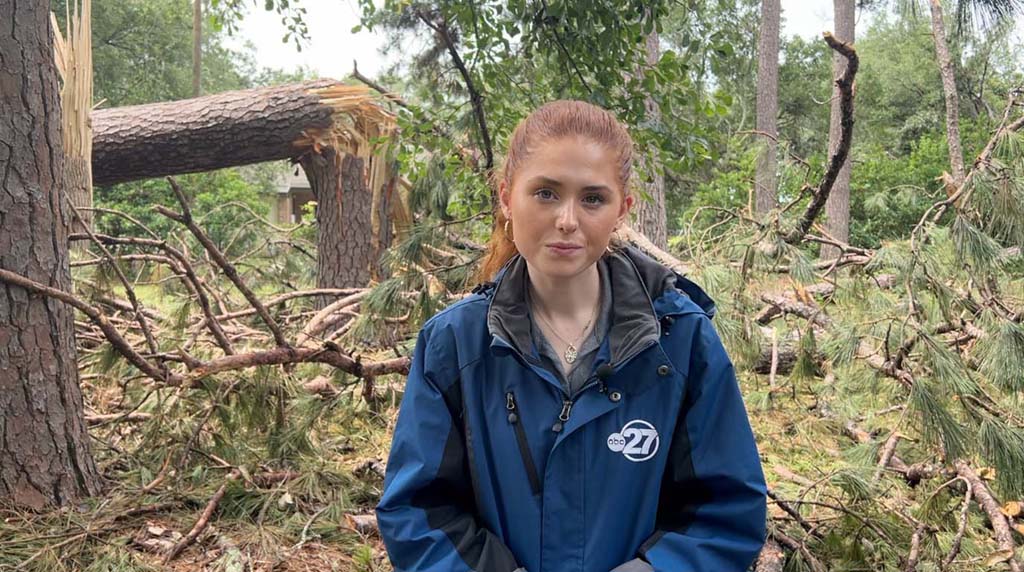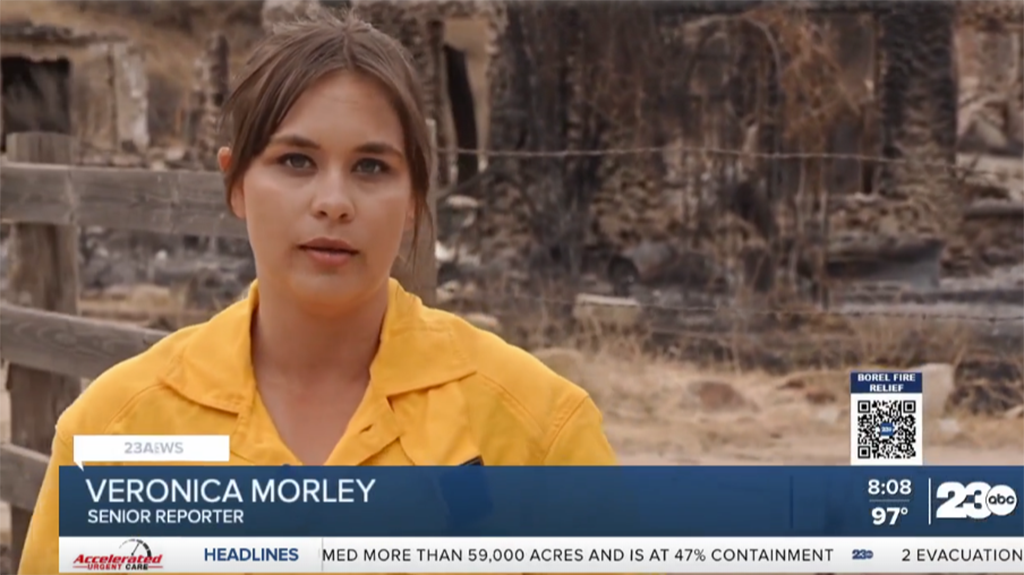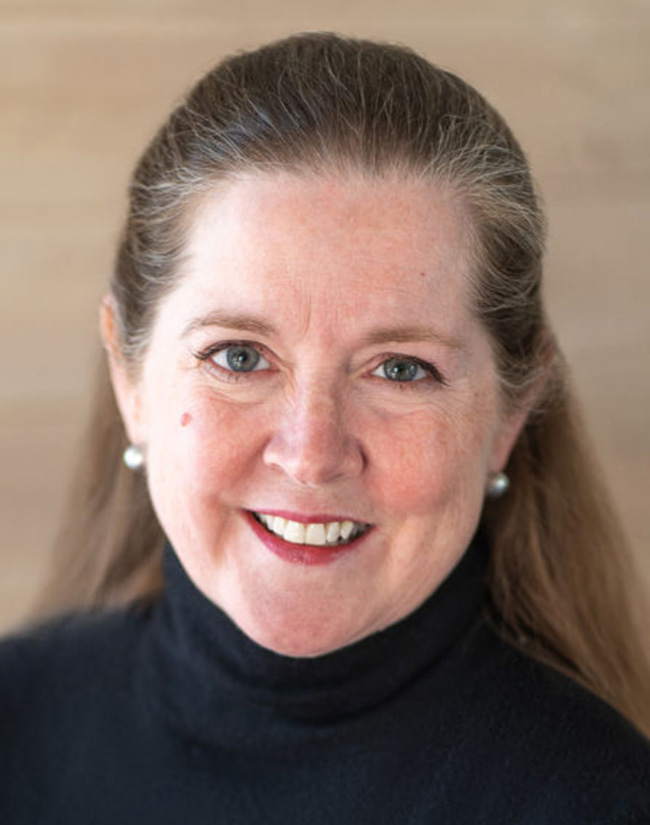
In her first job in television news, Maya Sargent, a multimedia journalist for E.W. Scripps’ WTXL, is covering a neighborhood in Northwest Tallahassee.
Originally from the U.K., Sargent said her British accent has endeared her to the Floridians she now lives with and reports on and makes them more inclined to talk to her.
“It’s been great to kind of learn more about my neighborhood through the lens of my neighbors,” Sargent told B+C Multichannel News. “They’re telling you what’s important to them, what they want to hear.”
From a message on Facebook, she learned that the food pantry at the local Veterans Village for homeless former servicemen was empty. Sargent did a story on that for the station.
A few days later, she got an email from a teacher in a school on the other side of town.
“They said they were so moved by the story,” Sargent said. The elementary school held a food drive and delivered what it collected to the Veterans Village. Sargent did a follow-up story.
“To call attention to a problem and have a viewer react and encourage a whole school to do a food drive then deliver that food to fill the pantry was the most unbelievable display of what local news can do,” she said.
That’s the ideal for Scripps, which launched the Neighborhood News format at many of its stations as part of its news initiative a year ago.
More Reporters in the Field
Scripps said it will have added 250 journalists in its local newsrooms by the end of the year, a 67% increase. In smaller markets, stations will have at least 10 reporters, and in larger markets, stations will have at least 25 journalists in the field.
The company has spent $11.4 million to increase the pay of its newsgathering employees, especially in small and midsized markets.
Scripps CEO Adam Symson, who began his career as a journalist, recently said in a note to staffers that he was “exceptionally proud” of the news being produced from the Scripps stations that have transitioned to the new system.
“In our smaller markets through the Neighborhood News strategy, we’re covering more of the community with far more reporters than in the past,” he said. “In our medium and larger markets, the new staffing structure is opening the opportunity to cover markets farther and wider, from the rural edges and far-flung suburbs to a city’s core. We are rebuilding trust with our audiences because we are committed to covering their community all the time and not just occasionally parachuting in.

“Now a year in, and with most of our local stations transitioned or having started their transition, by focusing on both quality journalism and financial performance, we are creating a stronger foundation for our future to serve our communities with local news for years to come,” Symson said.
They say you have to break a lot of eggs to make an omelet, and former Scripps executives say the new approach is producing lower ratings and adding to the company’s difficult financial condition.
Sources also said the initiative created a struggle within Scripps between those pushing the new approach and an old guard more interested in next month’s ratings and revenue than the future of TV news.
“There’s a struggle inside the company about how you get there and treat people respectfully,” said one former Scripps exec. “It was very much top down the way it was communicated and some if it didn’t happen the way they said it would happen.”
The struggle was intensified as Scripps went through a corporate reorganization that resulted in senior executives leaving the company and the replacement of general managers at many stations with station managers, reporting to regional managers.
Even within stations, there were jealousies as some staffers got raises, well-paid reporters were added and others saw their income stagnate or their jobs disappear altogether, the executives said.
Many of Scripps’ stations no longer rely on anchors and big chunks of their newscasts — other than weather — are prerecorded. When news breaks, Scripps said, its reporters can and do still report live.
A Scripps spokesman acknowledged that between the company’s reorganization and the news initiative, communication could have been better.
Business Worries
Former Scripps executives also said some station managers are concerned the initiative will hurt ratings and revenues — especially in 2025, when bigger stations make the change and political advertising dries up in a nonelection year. While viewers tell researchers they prefer softer community news, the executives said, they really want to know about the shootings, fires and other disasters in their neighborhoods.
In Tallahassee, Florida, one of the first markets where the initiative was installed, viewership fell sharply in the second quarter from a year ago, according to Comscore numbers. (Scripps uses Comscore for local audience measurement.)
Scripps noted that Comscore changed its methodology, making apples-to-apples comparisons difficult. Even given that, the leading station in the market saw a much smaller percentage decline in viewership.
Meanwhile, Scripps reported a second-quarter loss and is going through a second management shakeup, all of which has contributed to a big drop in the company’s stock price, which hasn’t enhanced faith in the company’s management.
As far as news is concerned, Sean McLaughlin, a 10-year Scripps vet who was senior VP, local news, before leaving earlier this year, agrees that change is due.
“At the end of the day, I think It’s pretty clear, no matter what sort of audience data you look at that local news needs serious reform,” said McLaughlin, now VP of news at Graham Media Group.
“I’ll tell you, it’s not easy,” he added. ”Within the industry, there’s a lot of tension between the reformers, the people who realize we need to drastically change the way we’re operating, and people who are clinging to a past that doesn’t exist anymore. That tension is what prevents real transformation from happening.”
Graham had a similar effort to modernize its news, improve its journalism and produce more stories underway when McLaughlin arrived at the company, he said.
“Any of the journalism-focused broadcasters that are left are eyeballing the same thing,” he said.
The issues at Graham and Scripps are not exactly the same. “Graham is in a different financial situation, so there’s not as much pressure on cutting costs,” McLaughlin said. “And so what it’s really allowed us to do is singularly focus on improving the quality of the news product and not having to simultaneously deal with the financial side.”
Scripps is moving forward with its local news initiative.

If TV is going to continue to inform viewers about their world, Scripps president of news Kate O’Brian said, it can’t become a victim of the financial and technological changes the industry is going through.
“Local news is just an institution like a battleship,” O’Brian said. “It’s going to be really hard to turn around. Where people lost their jobs, the reinvestment of the money saved went into expanding the number of journalists on the street.”
Some stations have cut ties with longtime anchors, but O’Brian said eliminating those big salaries to hire additional less-experienced staffers isn’t the Scripps strategy.
“The model is utilizing a lot of levers in order to bring in more reporters,” she said. “And that’s including using technology in a different way and reformatting what the newsrooms look like.”
And while O’Brian said she was sorry for those in newsrooms who’ve left the company, “we also appreciate the people who understand what we’re trying to do.”
At this point 35 stations have made the transition, starting with those in smaller markets. Scripps’ bigger stations started the process in August and the company expects it to be wrapped up in the fourth quarter.
Of those, 12 have chosen the Neighborhood News format.
Other stations have adopted formats including “Fight for What’s Right” and “We Follow Through,” which emphasizes staying with a story.
One of the first stations to make the transition was WTXL Tallahassee. Station manager Vicki Bradley said when she’s fully staffed, she’ll have 12 MMJs in her newsroom, a number she’d never experienced in a small market.
“In a lot of small markets, here are some places in your DMA you never get to because you never had the people,” she said.

The second largest city in the Tallahassee DMA is Valdosta, Georgia, two and half hours from the station. As part of the initiative, WTXL was able to hire a reporter from the Valdosta newspaper, whose family was from the area and went to college there.
“The beauty of hiring people that live in the community they serve is they want to stay,” Bradley said. “My desire is that my Valdosta reporter will want to stay because we do pay people a living wage.”
The station’s new salary structure means she can compete for talent in midsized markets. WTXL recently was able to hire a senior reporter from Charlotte, Bradley said.
Bradley said viewers are noticing the station’s reporters showing up and sticking around in their neighborhoods.
She was at a meeting of community leaders and people would come up to her and drop the names of the station’s reporters — something that hadn’t happened in the past. “This is crazy impactful,” she said.
More reporters in the newsroom creates a need for more management. That’s led to additional training and the creation of executive reporters, who help coach less-experienced MMJs.
At KERO, Scripps’s station in Bakersfield, California, Mike Hart, an anchor for 30 years, has become an executive reporter, overseeing the newsroom’s 12 MMJs, teaching them about what’s a story and how to report and write it.
“We’re a small market in size, but we’re in the second largest county in California,” he said. “This Neighborhood News model now sends our reporters into every corner of the county. They cover stories that we might not have covered even a year or two ago,” when the station had more anchors than reporters.
More Local, Less Live
Besides having more reporters, the station’s Neighborhood News format features fewer unnecessary live shots. “It makes us so much more efficient and it gives our reporters the ability to really spend more time putting their stories together,” Hart said, like a recent investigation into a rise of arson cases in the market.
In an industry where most news staffers move from market to market, Hart says he landed in Bakersfield and has now spent 33 years there. “People ask me where I’m from and I say I’m from Bakersfield,” he said.
At KERO, he’s been through a number of formats, from Action News to Standing Up for You. He said he hopes that Scripps’s initiative will encourage more people to stay in market — especially if that’s where they grew up.
KERO senior reporter Veronica Morley was born and raised in Bakersfield and has the talent to move up to a larger market, Hart said. “She has told me she wants to stay in Bakersfield. This is her home.”
Another KERO reporter, Corey O’Leary, lives in a little town called Bodfish. When storms hit the area, “having someone embedded up there where it was all happening was a tremendous advantage,” Hart said.
Hart hopes some of his younger MMJs will stick around.
“We’re going to see other companies follow us,” he said. “We’re already seeing it in our market. Two of the other stations are trying to imitate some of the things we’re doing.”







